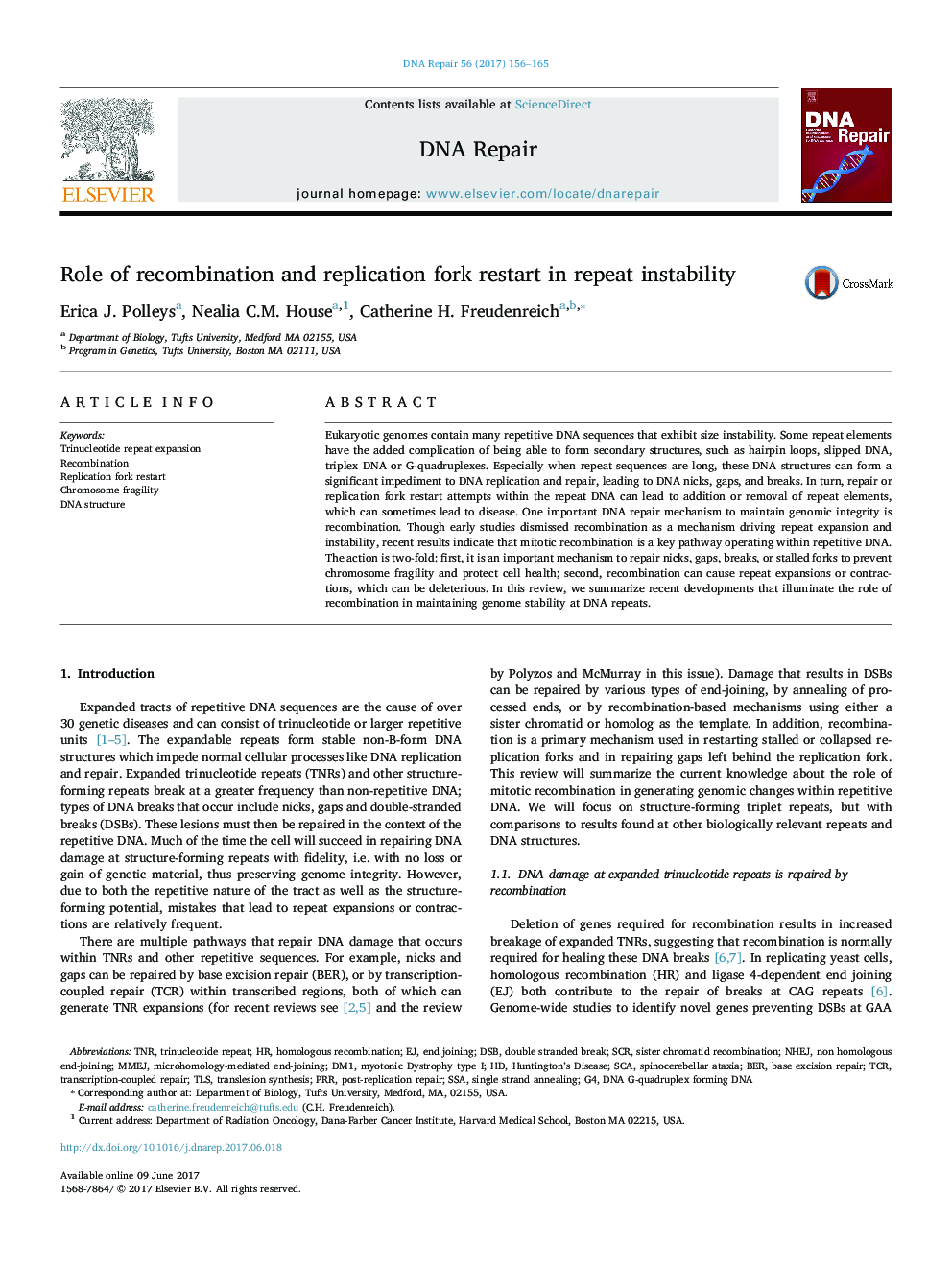| کد مقاله | کد نشریه | سال انتشار | مقاله انگلیسی | نسخه تمام متن |
|---|---|---|---|---|
| 5510987 | 1539372 | 2017 | 10 صفحه PDF | دانلود رایگان |
Eukaryotic genomes contain many repetitive DNA sequences that exhibit size instability. Some repeat elements have the added complication of being able to form secondary structures, such as hairpin loops, slipped DNA, triplex DNA or G-quadruplexes. Especially when repeat sequences are long, these DNA structures can form a significant impediment to DNA replication and repair, leading to DNA nicks, gaps, and breaks. In turn, repair or replication fork restart attempts within the repeat DNA can lead to addition or removal of repeat elements, which can sometimes lead to disease. One important DNA repair mechanism to maintain genomic integrity is recombination. Though early studies dismissed recombination as a mechanism driving repeat expansion and instability, recent results indicate that mitotic recombination is a key pathway operating within repetitive DNA. The action is two-fold: first, it is an important mechanism to repair nicks, gaps, breaks, or stalled forks to prevent chromosome fragility and protect cell health; second, recombination can cause repeat expansions or contractions, which can be deleterious. In this review, we summarize recent developments that illuminate the role of recombination in maintaining genome stability at DNA repeats.
Journal: DNA Repair - Volume 56, August 2017, Pages 156-165
